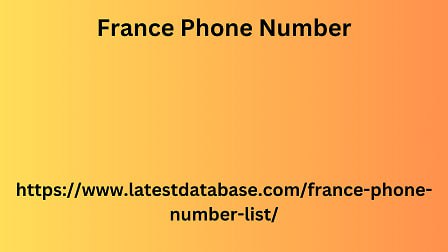Post by account_disabled on Feb 20, 2024 16:27:51 GMT 7
Interest in augmented reality among brands has skyrocketed thanks to Meta's desire to build its ownmetauniverse. Also contributing to the popularity of visual reality was the pandemic, during which technology was aimed at incorporating VR into everyday life. This year we could observe the firstVR fashion weekin the Decentraland metauniverse. Many companies are now developing solutions for communicating in the digital world, or even the ability to combine physical and digital experiences into hybrid workflows for different areas of activity. For example, before buying furniture, users can now try on the paint and decor of an empty room using augmented reality.
Doctors can train before complex operations in real time without being tied to a place using virtual reality. VR enables operators to move through the warehouse in real time to maximize order picking efficiency. UX/UI trends Read also : How to choose a payment system for the site AR/VR technology is rapidly developing and improving. Augmented reality will soon become more France Phone Number accessible to users, and brands will begin to adopt and popularize it more actively. It is important for UX designers to monitor how these technologies will be implemented. And the time has come to think about the implementation of new trends, because in addition to the integration of visual reality, it is also important to ensure the safety of users. Motion design Previously, developing animations for websites and applications was a real challenge for designers.

The challenge was finding a compromise between animation quality and site performance. But a lot has changed since then. Thanks to the change in bandwidth (5G) and the arrival of Lottie Files libraries, designers can create amazing animations and keep the optimal file size and smooth operation of the resource. Animation can diversify the site design and make it dynamic, surprise potential customers with unusual effects and simplify the user experience. Therefore, in the future, we will meet motion design more and more often. This trend is worth your attention. Subscribe to the hot ones MARKETING NEWS MARKETOLOGIST 2.0 > Subscribe to the monthly NEWS DIGEST Enter your E-mail Immersive scrolling Immersive page scrolling is closely related to animation. The traditional behavior of users when scrolling a page forced most designers to think about scrolling sites from the point of view of content.
Doctors can train before complex operations in real time without being tied to a place using virtual reality. VR enables operators to move through the warehouse in real time to maximize order picking efficiency. UX/UI trends Read also : How to choose a payment system for the site AR/VR technology is rapidly developing and improving. Augmented reality will soon become more France Phone Number accessible to users, and brands will begin to adopt and popularize it more actively. It is important for UX designers to monitor how these technologies will be implemented. And the time has come to think about the implementation of new trends, because in addition to the integration of visual reality, it is also important to ensure the safety of users. Motion design Previously, developing animations for websites and applications was a real challenge for designers.

The challenge was finding a compromise between animation quality and site performance. But a lot has changed since then. Thanks to the change in bandwidth (5G) and the arrival of Lottie Files libraries, designers can create amazing animations and keep the optimal file size and smooth operation of the resource. Animation can diversify the site design and make it dynamic, surprise potential customers with unusual effects and simplify the user experience. Therefore, in the future, we will meet motion design more and more often. This trend is worth your attention. Subscribe to the hot ones MARKETING NEWS MARKETOLOGIST 2.0 > Subscribe to the monthly NEWS DIGEST Enter your E-mail Immersive scrolling Immersive page scrolling is closely related to animation. The traditional behavior of users when scrolling a page forced most designers to think about scrolling sites from the point of view of content.